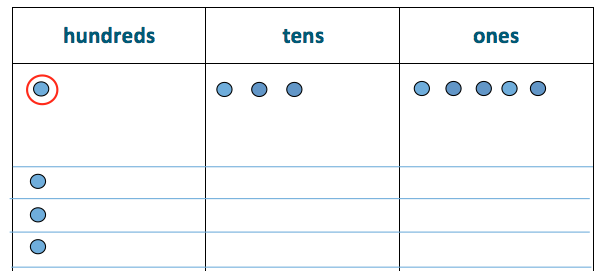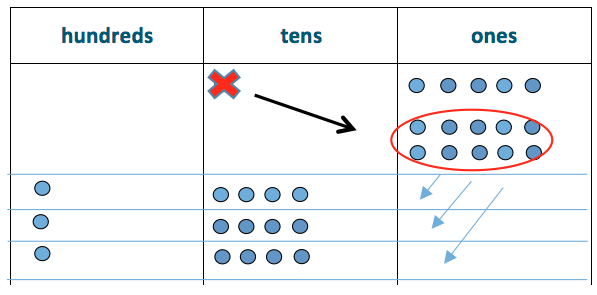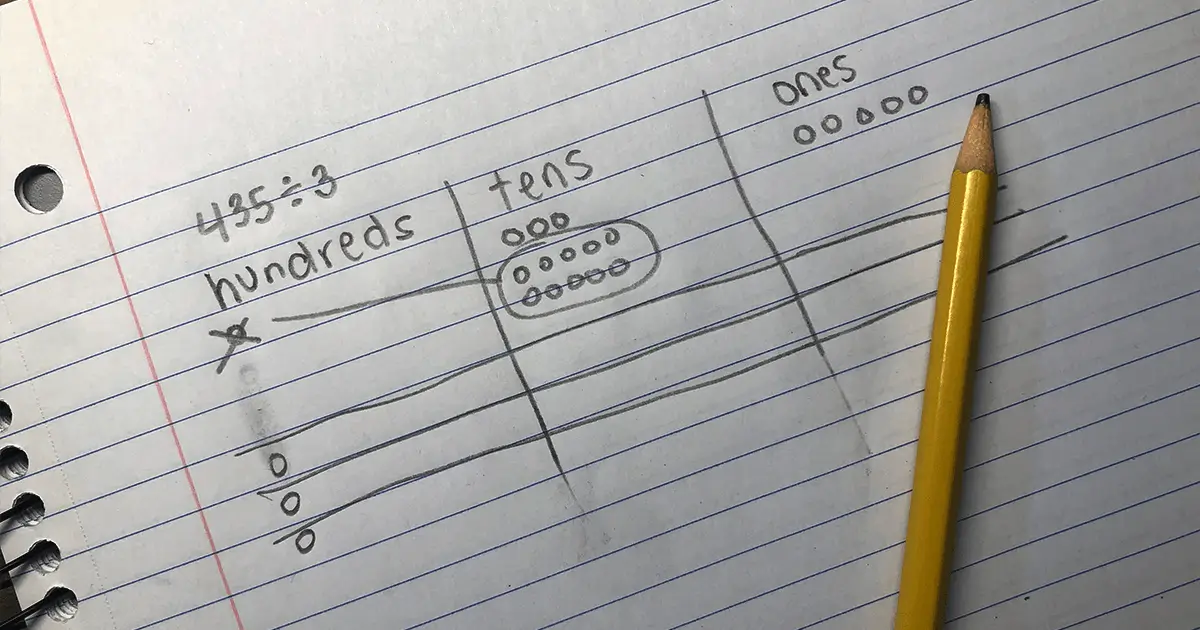Posted in: Aha! Blog > Eureka Math Blog > Conceptual Understanding > Beyond the Algorithm: Building A Conceptual Understanding of Division
STRATEGY
In my first years of teaching fourth grade, when it was time for division of multi-digit numbers, I’d write “D, M, S, B” on the board in a vertical manner. “Dad, Mom, Sister, Brother. All you have to do is remember that,” I’d say.
In doing a recent Google search for other mnemonics, I discovered that there are many more that teachers use ranging anywhere from ‘Dead Monkeys Smell Bad’ to ‘Dracula’s Mother Sucks Blood’ to ‘Does McDonalds Sell Cheese Burgers’ (the ‘C’ for compare).
I would argue that the mnemonics listed above do not help students to build an understanding of division. Sure, they’re likely to remember the sayings, but will they be able to translate that knowledge to what’s actually happening with the process of division? I think not.
Instead of relying on a ‘trick,’ Eureka Math builds a deeper understanding of division, exploring the long division algorithm by coupling it with division using the place value chart and place value disks.
WHAT DOES IT MEAN TO DIVIDE?
When we divide, we make equal groups. This is not new concept for students. Children do it every day when they are dealing out cards, sharing cookies with friends, or figuring out how many players will be on each team in a game. Here, it’s the same thing — just with larger numbers.
For example, we can express 435 ÷ 3 on the place value chart using place value disks. 435 = 4 hundreds 3 tens 5 ones.
Notice that we do not use language, such as: “how many ___ are in ___” or “bring down the ___”. This language is not necessary when students conceptually understand the process. Understanding can be developed first through work at the concrete level with place value disks, then at the pictorial level by drawing place value disks on a place value chart, and finally through the abstract work of long division.
DIVISION WITH PLACE VALUE CHARTS
Let’s begin. 435 ÷ 3:

We’ll make space on our chart to distribute the disks into 3 equal groups. First, let’s distribute the hundreds. There are 4 hundreds to distribute. We can distribute 3 hundreds.

There is 1 hundred in each group and 1 hundred remaining. The remaining 1 hundred cannot be distributed evenly.

We can decompose the remaining hundred for 10 tens. Now, there are 10 tens + 3 tens = 13 tens. We distribute 13 tens evenly among the 3 groups.

There are 4 tens in each group and 1 ten remaining. The remaining 1 ten cannot be distributed evenly.

We decompose the remaining ten for 10 ones. Now, there are 10 ones + 5 ones = 15 ones.

We distribute 15 ones evenly among the 3 groups so there are 5 ones in each group. There are zero ones remaining to distribute. Each group has 1 hundred 4 tens 5 ones.
The place value disks enable us to see what was happening when we divided. We made equal groups by distributing the dividend, starting with the largest place value.
DIVISION WITH THE STANDARD ALGORITHM
Now, let’s see how the work on the place value chart relates to the standard algorithm.

435 ÷ 3 = 145
Need some practice? Take the challenge of trying some other examples on your own. Mirror the language that is used above. Say the steps aloud. Think about the transfer from disks to the algorithm. Soon, you’ll find yourself visualizing the disks as you complete long division — the exact type of internal thinking that we strive to build within our students.
This post was written Mary Jones a Eureka Math writer for A Story of Units. To ask Mary Jones questions about her blog post or connect with other Eureka Math teacher-writers and users, visit our Facebook Page.
© Great Minds 2016
Submit the Form to Print

Great Minds
Great Minds PBC is a public benefit corporation and a subsidiary of Great Minds, a nonprofit organization. A group of education leaders founded Great Minds® in 2007 to advocate for a more content-rich, comprehensive education for all children. In pursuit of that mission, Great Minds brings together teachers and scholars to create exemplary instructional materials that provide joyful rigor to learning, spark and reward curiosity, and impart knowledge with equal parts delight.
Topics: Conceptual Understanding










